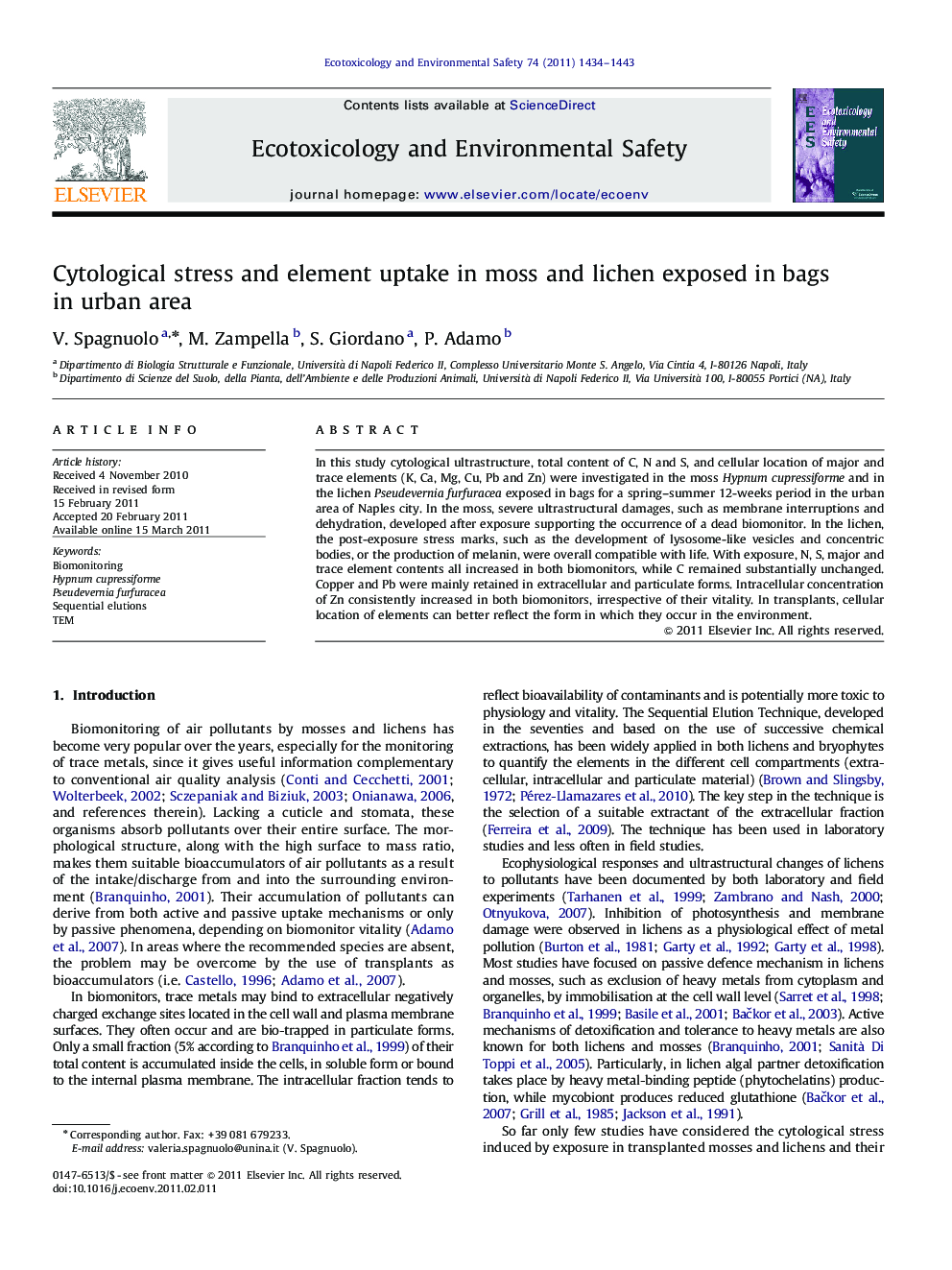| Article ID | Journal | Published Year | Pages | File Type |
|---|---|---|---|---|
| 4421227 | Ecotoxicology and Environmental Safety | 2011 | 10 Pages |
In this study cytological ultrastructure, total content of C, N and S, and cellular location of major and trace elements (K, Ca, Mg, Cu, Pb and Zn) were investigated in the moss Hypnum cupressiforme and in the lichen Pseudevernia furfuracea exposed in bags for a spring–summer 12-weeks period in the urban area of Naples city. In the moss, severe ultrastructural damages, such as membrane interruptions and dehydration, developed after exposure supporting the occurrence of a dead biomonitor. In the lichen, the post-exposure stress marks, such as the development of lysosome-like vesicles and concentric bodies, or the production of melanin, were overall compatible with life. With exposure, N, S, major and trace element contents all increased in both biomonitors, while C remained substantially unchanged. Copper and Pb were mainly retained in extracellular and particulate forms. Intracellular concentration of Zn consistently increased in both biomonitors, irrespective of their vitality. In transplants, cellular location of elements can better reflect the form in which they occur in the environment.
